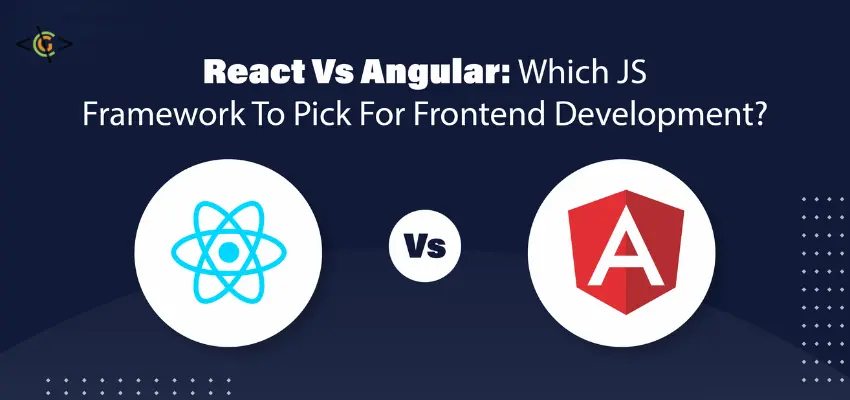Struggling to pick between React and Angular for your next project? Both dominate front-end development, but their strengths differ. This guide breaks down their differences to help you decide.

React, developed by Facebook (Meta), is a JavaScript library for building dynamic user interfaces using reusable components. It uses a virtual DOM for efficient updates and supports server-side rendering (SSR) for faster load times. React’s “Learn Once, Write Anywhere” philosophy allows code reuse across web and mobile apps (via React Native).
- Virtual DOM: Optimizes performance by minimizing direct DOM manipulation.
- Component Reusability: Build once, reuse across projects.
- Cross-Platform: Supports web, iOS, and Android via React Native.
- Large Ecosystem: Backed by libraries like Redux and React Router.
Angular, developed by Google, is a full-fledged framework for building scalable enterprise apps. It uses TypeScript for type safety and follows the MVC (Model-View-Controller) architecture. Features like two-way data binding and dependency injection simplify complex app development.
- Built-in Tools: CLI, testing utilities, and RxJS included.
- Two-Way Data Binding: Automates sync between UI and data.
- Structured Codebase: Enforces consistent coding patterns.
- Enterprise-Ready: Ideal for large teams and long-term projects.
Parameter | React | Angular |
Type | Library (UI Focus) | Full Framework |
Language | Javascript + JSX | TypeScript |
Data Binding | One-Way | Two-Way |
DOM | Virtual DOM | Real DOM |
Learning Curve | Moderate | Steep |
Best For | Dynamic UIs, Startups | Enterprise Apps |
- Popularity
React leads in developer adoption (40.8% in the 2024 Stack Overflow Survey) due to its flexibility. Angular remains popular in enterprise circles, with 22% usage.
- Performance
React: Virtual DOM reduces rendering bottlenecks, ideal for apps with frequent UI updates.
Angular: Real DOM suits complex apps but requires optimization for high interactivity.
- Development Speed
React: Flexible but requires third-party tools for routing or state management.
Angular: All-in-one solution speeds up development but adds initial setup complexity.
- Community and Ecosystem
React: Massive community with 52,000+ GitHub stars. Rich third-party libraries.
Angular: Strong corporate backing (Google) with detailed documentation.
- You need a lightweight solution for dynamic UIs (e.g., social media feeds).
- Your team prefers JavaScript and functional programming.
- Cross-platform mobile support is required.
When to Choose Angular?
- Building large-scale apps with strict coding standards (e.g., banking systems).
- Your team knows TypeScript and prefers structured frameworks.
- Long-term maintainability is a priority.
Conclusion
React offers flexibility and speed for UI-centric projects, while Angular provides structure for complex enterprise apps. Assess your team’s expertise, project scale, and long-term goals to decide. Both tools excel in their niches and there’s no universal “best,” only what’s best for your needs.
FAQs
- Is React replacing Angular?
No. React dominates UI-focused apps; Angular remains strong in enterprise environments. - Which pays more: React or Angular?
Salaries are comparable (avg. $110k-$140k/year in US), but React has more job openings. - Can I use both together?
Technically possible but not recommended—they solve similar problems differently. - Which has better long-term support?
Angular offers LTS versions; React’s ecosystem evolves faster but maintains backward compatibility.